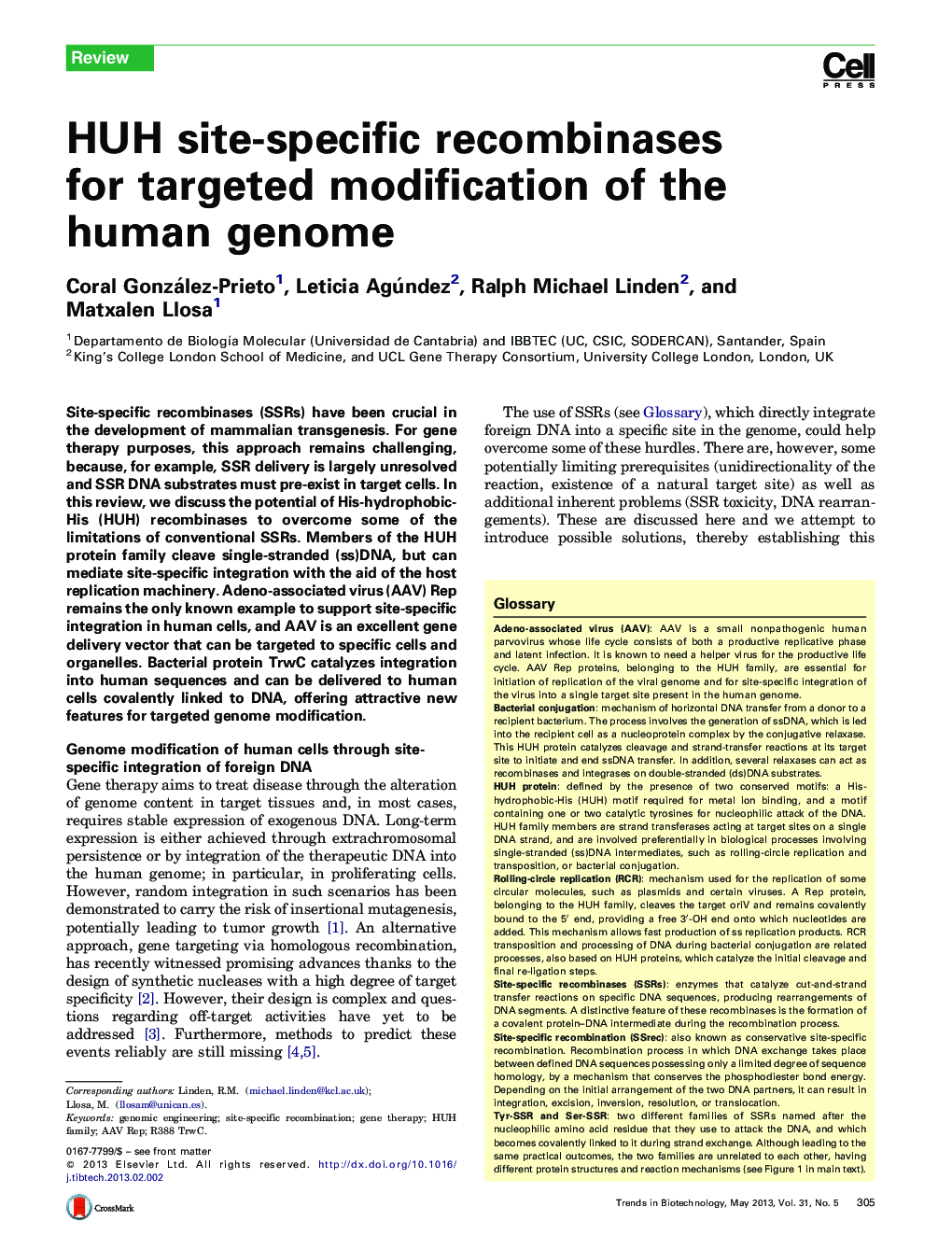| کد مقاله | کد نشریه | سال انتشار | مقاله انگلیسی | نسخه تمام متن |
|---|---|---|---|---|
| 37076 | 45308 | 2013 | 8 صفحه PDF | دانلود رایگان |

• SSRs offer attractive features for targeted genome modification.
• HUH SSRs can integrate ssDNA with the aid of host replication machinery.
• AAV Rep and R388-TrwC can be delivered in vivo.
• Rep-mediated integration into AAVS1 does not have adverse effects.
Site-specific recombinases (SSRs) have been crucial in the development of mammalian transgenesis. For gene therapy purposes, this approach remains challenging, because, for example, SSR delivery is largely unresolved and SSR DNA substrates must pre-exist in target cells. In this review, we discuss the potential of His-hydrophobic-His (HUH) recombinases to overcome some of the limitations of conventional SSRs. Members of the HUH protein family cleave single-stranded (ss)DNA, but can mediate site-specific integration with the aid of the host replication machinery. Adeno-associated virus (AAV) Rep remains the only known example to support site-specific integration in human cells, and AAV is an excellent gene delivery vector that can be targeted to specific cells and organelles. Bacterial protein TrwC catalyzes integration into human sequences and can be delivered to human cells covalently linked to DNA, offering attractive new features for targeted genome modification.
Journal: - Volume 31, Issue 5, May 2013, Pages 305–312